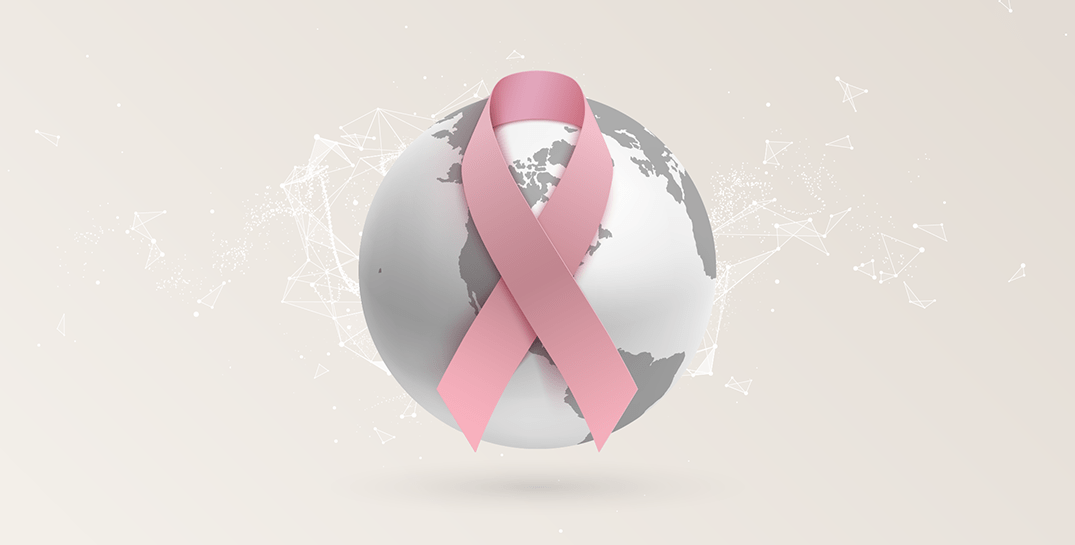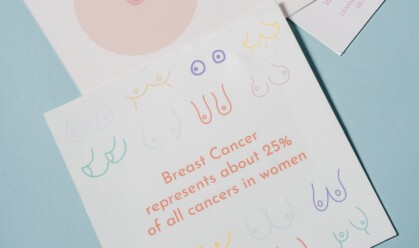Breast cancer – a worldwide problem

Breast cancer is the most common cancer in women. In 2018 alone, more than 2 million new cases were reported worldwide. How do breast cancer cases look from a global perspective? In which regions of the world is it occurring most often? At what age is the peak incidence? What can influence this?
According to one statistic, about one in 20 women will develop breast cancer during her lifetime. However, this is an estimate for the whole world.When looking closer, the risk of breast cancer differs from one country to another. The highest incidence of breast cancer is in highly developed countries. Australia and New Zealand are at the top of this list, together with north-western Europe. The incidence of breast cancer in these countries is about 100 cases per 100 thousand women. It can be at least partially explained by the higher prevalence of cancer-promoting factors in these countries: low physical activity and obesity. However, this is not the only reason. It is also because early screening programs and good diagnostics in these countries allows for detection of cases that would otherwise go unnoticed, and women live longer on average, while breast cancer occurs mainly in older people.
The lowest incidence, but also the highest mortality, is observed in less developed countries such as Polynesia, Melanesia, the Caribbean Islands and North African regions. While in Europe and the United States about 13 to 14 women per 100,000 die from breast cancer, in countries with the highest mortality it is about 20 out of 100,000 women on average. It is due to, among others, limited access to medical services, including breast cancer screening. On the other hand, both low incidence and the world’s lowest mortality from this cause is observed in Japan and amounts only to less than 9 cases per 100 thousand women.
Changing trends
The situation has been dynamic for years. Since 2008, there has been a 20% increase in breast cancer incidence worldwide and a 14% increase in breast cancer mortality. However, the incidence rate in highly developed countries has remained stable and the mortality rate has even been decreasing. The so-called ‘5-year survival rate’, which determines how many women survive the five years following diagnosis, is steadily increasing. Thus, the increase in morbidity and mortality may be explained by the popularization of the “Western” lifestyle in poorer regions of the world as well as improving diagnostic services with still low accessibility of the latest, most effective therapies in these countries.
At what age do women develop breast cancer
As it turns out, gender and age are major contributors to breast cancer. Using the American female population as an example, it has been calculated that the risk of developing invasive breast cancer increases steadily with age until the age of 70, at which point the risk is about 4%, and then it decreases again. The greatest increase in incidence is seen after the age of 40. While young women also develop the disease, it is less common. Age is an important factor, but it is not the only thing that predisposes to the disease. Lifestyle and genes are also important. It is also worth mentioning that breast cancer may also occur in males – although approximately 1000 times less frequently than among women.
References:
- “Breast Cancer.” The Cancer Atlas, 2019, canceratlas.cancer.org/the-burden/breast-cancer/. Accessed 10 Jan. 2021.
- American Cancer Society. “Breast Cancer Facts & Figures 2019-2020.” 2019.
- World Cancer Research Fund International. “Breast Cancer Statistics.” World Cancer Research Fund, 12 Sept. 2018, www.wcrf.org/dietandcancer/cancer-trends/breast-cancer-statistics. Accessed 10 Jan. 2021.


